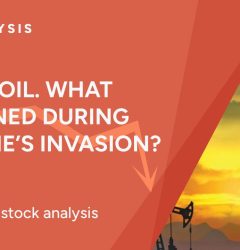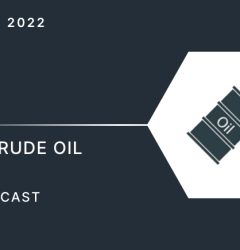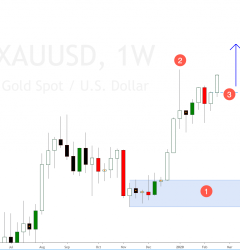12 Mar
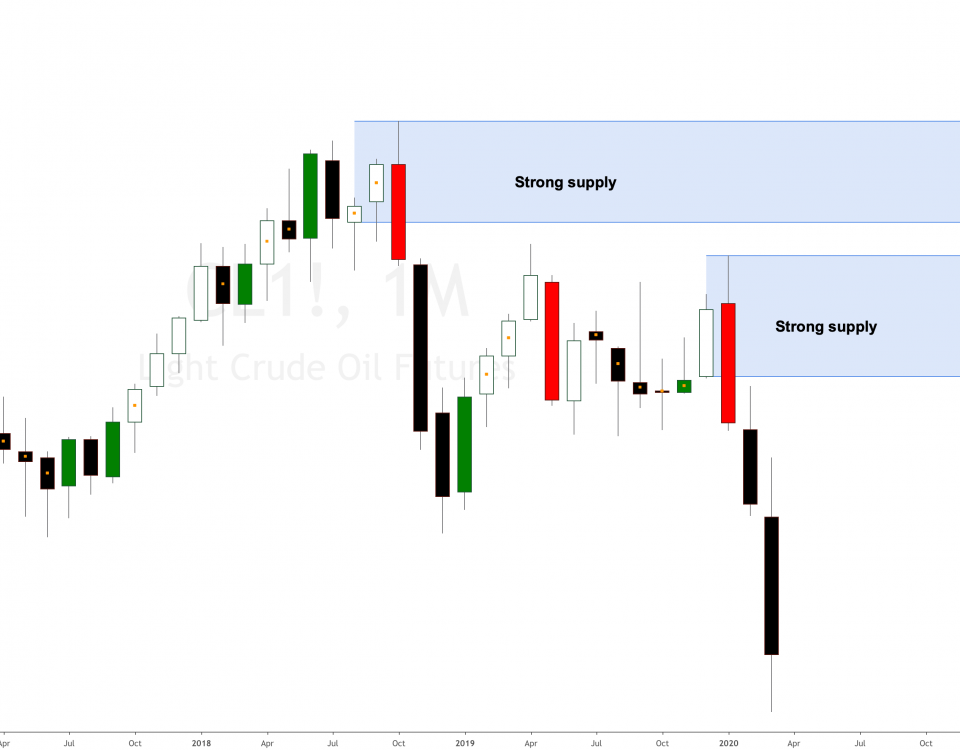
As major economies go into lockdown, oil demand continues to fall off a cliff. A few days ago, the U.S. did very little against coronavirus propagation. In just a few days, there has been a proliferation of school cancellations, mass gathering prohibitions and mandatory telework orders, following suit with what has been done in other countries like China, France and Spain. Restaurant closures are next. Pretty soon, much of the country will be on lockdown.
Crude Oil forecast 2020
The Federal Reserve will probably move rates to near zero soon if things continue like this, heading off to a potential economic recession and financial crisis.
As supply and demand traders, we should not care much about fundamentals because charts have their own voice, it tells us what is going on and where the pools of liquidity and new imbalances are being created on Crude Oil futures (CL) or any other asset. Look underneath the monthly timeframe analysis for Crude Oil Futures (CL). We can see two strong imbalances located around $55.47 and $68.43. No retracement has happened yet, it almost did retrace to the upper one last April 2019, but it just couldn’t, and it sold off again, creating a new imbalance slightly lower, around $68.43.
Crude Oil chart analysis
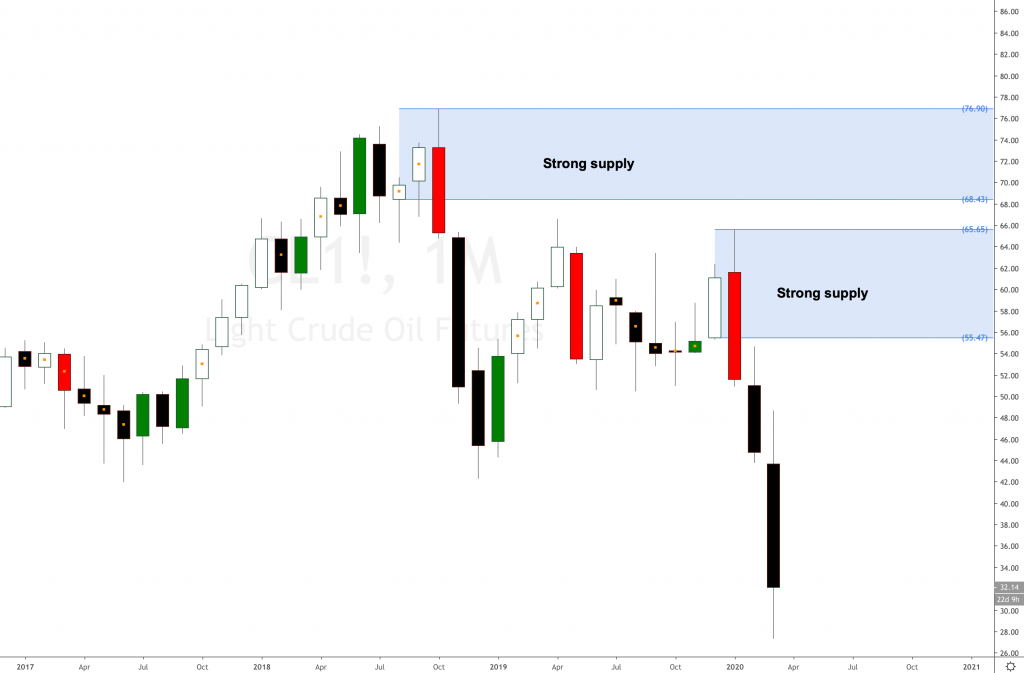
Several analysts say that oil prices will likely continue to fall. The potential loss of demand in March-April 2020 might dwarf anything the world has ever seen when OPEC and producers open the floodgates of new supply to the market. Oil production could fall further, forcing an immediate halt to drilling.
As supply and demand traders, we should not care much if Oil plunges after failing to reach a deal or the existing oil wars and fights between Opec, Russia, Arab countries and the US. Oil is trading lower after Saudi Arabia slashed crude oil prices. Still, if we look at Royal Dutch Shell’s monthly timeframe and other oil-related stocks worldwide, we will see that it was the most likely direction the oil-related stock could move since we had a weekly supply in control and a clear downtrend and bearish bias.
Crude oil chart history video
Remember that a single timeframe is not enough to make a trading decision. You must put the new imbalances into context and only trade them if a multiple timeframe analysis has been done following supply and demand rules.
This is the kind of price action technical analysis you will learn in our trading community. You will learn how to locate new supply and demand imbalances and trade without using any indicators, no news, no fundamental analysis, no earnings announcements, no volume or VSA analysis. Just supply and demand imbalances.
Trading supply and demand imbalances is ideal for beginners and those with a full or half-time job; you won’t need to stay in front of the computer all day long trying to move price action with your mind.
CL futures price
As supply and demand traders, we do not need to pay attention to the news, fundamentals or any earnings reports. Once a big timeframe imbalance has gained control, earnings do just the opposite and react strongly to those imbalances. Why do you see positive earnings and then the underlying stock drops like a rock, or a negative earnings announcement and the stock rallies like a rocket out of control? You are probably missing the fact that there are big imbalances in gaining control.
You should not worry about fundamentals or earnings announcements unless you are doing very short-term trading and scalping.
You can use these imbalances to plan your trades in lower timeframes. Trading is just waiting for the right trigger points and scenarios to present themselves, this game has got a name and it’s called the waiting game. We need to patiently wait for the correct scenarios and setups to happen and wait for the price to pull back or dip into the price levels we want to trade, in our case these price levels are made of supply and demand imbalances.
Join our supply and demand trading course if you want to learn how to trade using our supply and demand trading strategy.
There are several ways of buying stocks and futures. When trading stocks, you can buy shares of the underlying stock or use options strategies to go long or short at these specific supply and demand levels, long calls or long puts or spreads. You can even buy a CFD (contracts for difference) if you are in a country where it’s allowed.
